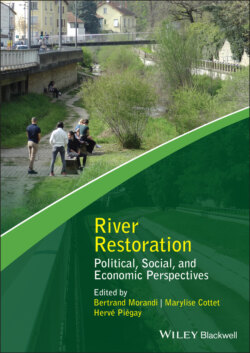Читать книгу River Restoration - Группа авторов - Страница 44
2.2.1 Challenge 1: the connectedness of rivers
ОглавлениеThe first challenge pertains to the fact that rivers are not easy to isolate from the ecosystems that surround them. Of course, one can easily identify the channel of the river, as well as the banks, but it is in the nature of rivers to flow from their source to the sea, while at the same time receiving water from other channels. The river, in other words, cannot be easily separated either from its watershed or from the receiving body of water into which it flows. This in turn has huge significance for restoration projects. If a river is polluted or subject to problematic flooding as a result of agricultural, industrial, or urban runoff, then focusing only on restoring the main channel may prove ineffective (Bernhardt and Palmer 2007). In this respect, the situation would appear to be quite different from the restoration of a portion of wild forest following an isolated mining operation. Moreover, it is interesting in this context to consider a thought experiment suggested by Elliott (1997), in which we are asked to imagine two apparently identical islands, the first of which is natural, and the second of which has been constructed by environmental engineers. Elliott’s claim is that the value of the former exceeds that of the latter, for the latter is a fake. Whatever one may think of this argument, it is clear that a basic presupposition of the thought experiment is that the thing being restored is radically cut off from the rest of nature, like a painting whose frame demarcates it from the rest of the world. But the static island – cut off and framed by the surrounding ocean – is in this respect almost the exact opposite of the fluid river, intricately connected to its surrounding ecosystems.1
